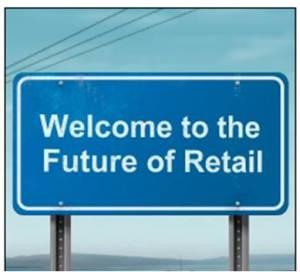This post is my imagination of how the entire process of ‘shopping’ will be conducted in the year 2030 and is part of the Indiblogger eBay competition, more details of which can be found at this link [Link].
eBay has come up with this awesomely innovative concept called eBay Check, a Google Chrome extension, more details of which can be found at this link [Link]. Do check it out, it is quite a nice, useful concept.
===========

By 2030 (approximately 15+ yrs from today), the assumption is that a majority of the country will be connected by high speed broadband and that most urban shoppers (including Tier II and III cities) will be extremely comfortable shopping online for most part.
Grocery shopping
Most refrigerators will have automatic RFID readers built into their doors and outer frames which will enable these smart fridges to detect their contents along with quantities, based on the miniscule embedded RFID devices in the wrapping of various items kept in the fridge. Further, each fridge will also have options where users can enter the required quantity of items, reorder levels of items (ie, quantities below which items need to be reordered), and reorder quantities of items which will be updated at regular intervals.
These fridges will then be connected to various shopping portals (such as eBay) via built-in Wi-Fi and will automatically reorder products which have gone below the reorder levels.
For eg, if the user configures the fridge to reorder 6 eggs as soon as the quantity of eggs goes below 4, the fridge automatically detects the number of eggs in the fridge using the RFID chips embedded in the packaging of the eggs, and places an order for 6 eggs on the shopping portal, which will then be delivered by the vendor connected to the portal.
And just like smart fridges, most homes will also have smart cupboards where grocery items are stored. Just like the fridges, these cupboards also will have RFID readers embedded in their doors and frames which will automatically detect the contents of items stored in them.
Thus, grocery shopping will pretty much be done automatically.
Apparel shopping
Today, online shopping portals provide users with the ability only to see their merchandise as photos and pictures. In 2030, these portals will also have the ability to project 3-D holographs of their dresses to users. These holographic images can be sent either to laptops or mobile phones which will have the ability to project them to users anywhere and everywhere. This way, users can clearly see the fitting of the dress they are interested in.
Such portals will also have the ability to project these dresses on user uploaded photographs to enable them to see if the dress will really look good on them. They can check the length of skirts, the fit of trousers, whether that rose on the left shoulder really looks good with their current hairstyle, using this technology. This way apparel shopping can be done fully within the comfort of one’s home itself without necessarily having to go to a store, stand in queue waiting for the turn at the trial rooms, etc.

Gadget shopping
Shopping portals will provide users with the ability to virtually try out devices such as laptops, mobile phones, gaming consoles using virtualization software available on their sites.
For eg, if somebody wants to buy a gaming console, the shopping portal will have a sub-site where the entire user experience of the gadget will be virtualized and the user can play around with the gadget virtually to explore its various features and then make an informed decision.
Gadget shopping therefore will become another stay at home experience for users by 2030.
Book shopping
While Amazon Prime offers its users of borrowing Kindle eBooks today, by 2030, users will have the ability to borrow even regular books online for a monthly fee, and in case they really like the book and want to keep it for themselves, they will have the option to purchase the book from their favorite online bookstore.
Online Ticketing
While most travel portals offer the convenience and flexibility of users comparing multiple travel options before selecting the one that suits their needs the best, by 2030, the entire online ticketing experience will become extremely seamless and comfortable.
In case the flight or train that an user has booked is cancelled or delayed for whatever reason, the travel portal will provide users with immediate alternatives such as alternative flights or other modes of travel to ensure that they are not put to any inconvenience.
User Preferences
While most online shopping portals today remember user preferences and make suggestions based on previous shopping experiences, by 2030, the entire data gathered by these portals will ensure that users make smart choices not only based on their previous preferences, but weightage will also be given to factors such as time of year, current shopping trends, preferences towards discounted deals, etc which will enable users to get the best experiences whenever they shop for anything.
Payment mechanisms for all of the above shopping
Although most online payment mechanisms exist for online shopping today, the entire system will be extraordinarily streamlined by the year 2030 and online payments will become a safe, secure and smart experience for all users by then.
Users will have the ability to transfer a particular sum of money to a centralized online depository maintained across the entire country, and will be able to make all online payments using the same. While this would do away with the hassle of remembering multiple user ids and passwords for multiple banks, this would also provide money conscious users with the ability to stay within pre-decided shopping budgets, on the basis of which they would transfer money to this depository.
For users who are habituated to using credit cards, this central depository would also offer credit facilities similar to what Credit Card Companies today do. This would ensure that such users are not constrained in their shopping by their current balance of funds.
========
Image courtesy: Google Images search for “shopping in the future”
